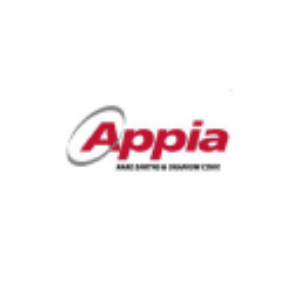Appia Confirms Outstanding Desorption Results From Its Ionic Adsorption Clay Targets Maia, Electra, Taygeta and Merope in Goias, Brazil
Rhea-AI Summary
Appia Rare Earths & Uranium announced initial desorption test results from its Ionic Adsorption Clay (IAC) targets in Goias, Brazil. The results, from 89 samples across 13 auger drillholes, confirmed the REE IAC mineralization style at all targets, showing strong recoveries for both Magnet Rare Earth Oxides (MREO) and Heavy Rare Earth Oxides (HREO).
Highlights include:
- Up to 82% HREO recovery from 3-4m depths.
- Significant intervals: PCH-AH-202: 5m@59% TREO; 63% HREO; 85% NdPr; 72% TbDy from 3m.
- Enhanced Dy and Tb recovery values, essential for the permanent magnet industry.
Company President Stephen Burega emphasized the high grades and the project's potential in meeting the industry’s demand for rare earths. The project, hosted in easy-to-dig clays with a diversity of metals, continues to show promising desorption kinetics.
Positive
- Up to 82% HREO recovery confirmed.
- Significant intervals include PCH-AH-202: 5m@59% TREO; 63% HREO; 85% NdPr; 72% TbDy from 3m.
- High grades and potential to meet industry demand for rare earths.
- Enhanced Dy and Tb recovery values, important for the permanent magnet sector.
Negative
- None.
News Market Reaction 1 Alert
On the day this news was published, APAAF declined 0.32%, reflecting a mild negative market reaction.
Data tracked by StockTitan Argus on the day of publication.
Toronto, Ontario--(Newsfile Corp. - August 20, 2024) - Appia Rare Earths & Uranium Corp. (CSE: API) (OTCQX: APAAF) (FSE: A0I0) (MUN: A0I0) (BER: A0I0) (the "Company" or "Appia") announced today the initial desorption test results from the Ionic Adsorption Clay (IAC) rare earth elements (REE) targets Maia, Electra, Taygeta and Merope at the PCH project. A total of 89 samples from 13 auger drillholes were sent to ALS Laboratories in Lima, Peru (ALS), and the results consistently confirmed the REE IAC mineralization style on all targets developed over the Ipora Granite. The results show very good recoveries of Magnet Rare Earth Oxides (MREO) and Heavy Rare Earth Oxides (HREO).
Stephen Burega, President, said, "The four (4) new targets are showing higher levels of heavy rare earths as we continue to explore to the East of the property, with excellent Dy and Tb recovery values at Merope and Taygeta targets, representing a significant increase in desorption levels. These are important results that demonstrate further that we have discovered a notable ionic clay rare earths deposit. Our project has many superior characteristics including its hosting in easy to dig clays, a desirable diversity of metals including the "rare" rare earths, the high grades encountered and the large scope of the project. Industry has a growing need for rare earths in a stable and western jurisdiction and we are committed to offer a solution."
Drill crews are working daily in order to expand the IAC mineralization over this significant project area. The Company continues to see very favourable kinetics across all of the ALS desorption testing. With these increases in Dysprosium (Dy) and Terbium (Tb) recoveries, the PCH project continues to demonstrate its potential as a future source for these extremely important minerals for the permanent magnet industry.
Highlights
- Discrete desorption interval samples from auger drillholes located on Ipora Granite lithology (see Map 1) returned recoveries up to:
72% TREO on auger drillhole PCH-AH-202 from 3 to 4 metres.82% HREO on auger drillhole PCH-AH-202 from 3 to 4 metres.84% Dy+Tb on auger drillhole PCH-AH-190 from 4 to 5 metres.82% Nd+Pr on auger drillhole PCH-AH-207 from 3 to 4 metres.
- The most significant recovered desorption intercepts for the main mineralized zone were:
- PCH-AH-202 5m@
59% TREO;63% HREO;85% NdPr;72% TbDy from 3m. - PCH-AH-204 4m@
54% TREO;59% HREO;71% NdPr;56% TbDy from 2m. - PCH-AH-190 4m@
47% TREO;47% HREO;61% NdPr;55% TbDy from 1m. - PCH-AH-194 3m@
40% TREO;38% HREO;68% NdPr;36% TbDy from 3m. - PCH-AH-097 4m@
34% TREO;46% HREO;55% NdPr;48% TbDy from 2m. - PCH-AH-036 7m@
37% TREO;44% HREO;63% NdPr;47% TbDy from 3m.
- PCH-AH-202 5m@
- The results of the main mineralized zone and from the full auger drillhole length from all tested drillholes are presented in Table 1 below. The full set of results are available through this LINK. The auger hole coordinates are presented in Table 2 below.
- Desorbability tests were conducted by ALS using an Ammonium Sulfate solution at 0.5M, pH2, for 20 minutes at room temperature.

Table 1 - Full length and main desorption zone (bold) recovery results of all drillholes tested. To view the full list of results, please click here.
To view an enhanced version of this graphic, please visit:
https://images.newsfilecorp.com/files/5416/220528_4102f5cec4d8182f_001full.jpg
*Total Rare Earth Oxides: TREO = Y2O3 + Eu2O3 + Gd2O3 + Tb4O7 + Dy2O3 + Ho2O3 + Er2O3 + Tm2O3 + Yb2O3 + Lu2O3 + La2O3 + CeO2 + Pr6O11 + Nd2O3 + Sm2O3
*Heavy Rare Earth Oxides: HREO = Gd2O3 + Tb4O7 + Dy2O3 + Ho2O3 + Er2O3 + Tm2O3 + Yb2O3 + Lu2O3 + Y2O3
*NdPr = Nd2O3+Pr6O11
*DyTb = Dy2O3+Tb4O7
*Element to Oxide Conversion Factor - Cerium CeO2 1.2284,, Dysprosium Dy2O3 1.1477, Erbium Er2O3 1.1435, Europium Eu2O3 1.1579, Gadolinium Gd2O3 1.1526, Holmium Ho2O3 1.1455, Lanthanum La2O3 1.1728, Lutetium Lu2O3 1.1371, Neodymium Nd2O3 1.1664, Praseodymium Pr6O11 1.2082, Samarium Sm2O3 1.1596, Terbium Tb2O3 1.1510, Terbium Tb4O7 1.1762, Thulium Tm2O3 1.1421, Yttrium Y2O3 1.2699, Ytterbium Yb2O3 1.1387
* ppm=parts per million and D=the desorbed Amount
* Desorbability results were conducted using Ammonium Sulfate at 0.5M, pH2, for 20 minutes.

Map 1 - Location of auger drillholes entirely tested for REE desorption from Targets Maia, Electra, Merope and Taygeta.
To view an enhanced version of this graphic, please visit:
https://images.newsfilecorp.com/files/5416/220528_4102f5cec4d8182f_002full.jpg

Table 2 - Sampled Auger holes coordinates
To view an enhanced version of this graphic, please visit:
https://images.newsfilecorp.com/files/5416/220528_4102f5cec4d8182f_003full.jpg
Andre Costa, VP Exploration for Brazil, commented, "These exciting results confirm the potential for REE Ionic Desorption Clay mineralization on all tested new targets. All of them over the Ipora Granite. We are on the right path in characterizing the Maia, Electra, Taygeta and Merope targets in the PCH Project and we will continue to focus drilling on these new targets to determine recoverability and delineate their extension since they remain open on all directions."
On March 1st, 2024, the Company announced its maiden Mineral Resource Estimate (MRE) on Target IV and the Buriti Zone (Click here for the Press Release), and the companion NI 43-101 technical report on the PCH Project was filed on April 16th, 2024. (Click here for the Press Release)
QAQC
Auger drillholes are vertical and reported intervals are true thickness. The material produced from auger holes are sampled at one metre intervals, resulting in average sample sizes of 5-10 kg. Quartering of the material was performed at Appia's logging facility using a riffle splitter and continued splitting until a representative sample weighing approximately 500g each was obtained, bagged in a resistant plastic bag, labeled, photographed, and stored for shipment.
The bagged samples are sent to the ALS laboratory in Goiânia, Goias for initial preparation and sent to Lima Peru for final analysis. In addition to the internal QA/QC of the ALS Lab, Appia includes its own control samples in each batch of samples sent to the laboratory.
Quality control samples, such as blanks, duplicates, and standards (CRM) were inserted into each analytical run. For all analysis methods, the minimum number of QA/QC samples is two standard, one duplicate and one blank, introduced in each batch which comprises full-length hole(s). The rigorous procedures are implemented during the sample collection, preparation, and analytical stages to insure the robustness and reliability of the analytical results.
All analytical results reported herein have passed internal QA/QC review and compilation. All assay results of RC samples were provided by ALS, a Certified Laboratory, which performed their measure of the concentration of rare earth elements (REE) with the ME-MS81 analytical method that uses lithium borate fusion prior acid dissolution and Inductively Coupled Plasma Mass Spectrometry (ICP-MS). Major Element Oxides were done using ME_ICP06 analytical method using lithium borate fusion and inductively coupled plasma atomic emission spectroscopy (ICP-AES). Desorption analysis with ME-MS19 analytical method with samples being leached with a solution of Ammonium Sulphate at 0.5 molar, pH 2, room temperature for 20 minutes. The leached solution content was analysed using ICP-AES/ICP-MS.
The technical information in this news release, including the information related to geology, drilling, and mineralization, has been reviewed and approved by Andre L. L. Costa, Appia's VP Exploration for Brazil, with more than 29 years of relevant experience. Mr. Costa is a APEGS Professional Geoscientist (P.Geo.) and a Fellow of Australian Institute of Geoscientists (FAIG), a Qualified Person (QP) as defined by National Instrument 43-101 - Standards of Disclosure for Mineral Projects.
About Appia Rare Earths & Uranium Corp. (Appia)
Appia is a publicly traded Canadian company in the rare earth element and uranium sectors. The Company holds the right to acquire up to a
Appia has 136.8 million common shares outstanding, 145.5 million shares fully diluted.
Cautionary note regarding forward-looking statements: This News Release contains forward-looking statements which are typically preceded by, followed by or including the words "believes", "expects", "anticipates", "estimates", "intends", "plans" or similar expressions. Forward-looking statements are not a guarantee of future performance as they involve risks, uncertainties and assumptions. We do not intend and do not assume any obligation to update these forward-looking statements and shareholders are cautioned not to put undue reliance on such statements.
Neither the Canadian Securities Exchange nor its Market Regulator (as that term is defined in the policies of the CSE) accepts responsibility for the adequacy or accuracy of this release.
For more information, visit www.appiareu.com
As part of our ongoing effort to keep investors, interested parties and stakeholders updated, we have several communication portals. If you have any questions online (X, Facebook, LinkedIn) please feel free to send direct messages.
To book a one-on-one 30-minute Zoom video call, please click here.
Contact:
Tom Drivas, CEO and Director
(c) (416) 876-3957
(e) tdrivas@appiareu.com
Stephen Burega, President
(c) (647) 515-3734
(e) sburega@appiareu.com

To view the source version of this press release, please visit https://www.newsfilecorp.com/release/220528







